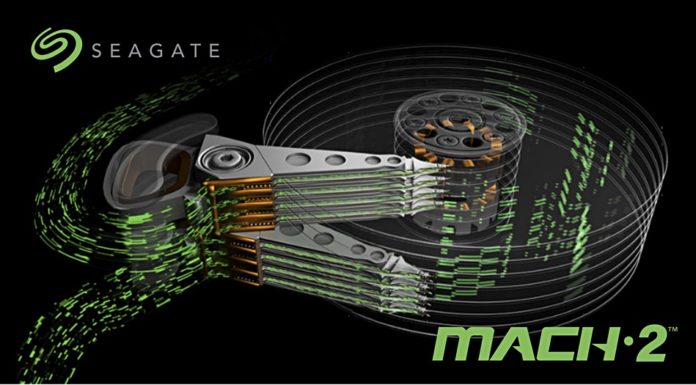Seagate crossed the $3 billion quarterly revenue line for the first time in six years as demand for high-capacity disk drives spins ever higher. Shipping more bits brings in more bucks.
It earned $3.01 billion in its final FY2021 quarter, ended July 2, and up 19.2 per cent year on year, with a $482 million profit, up 190.4 per cent from the year ago $166 million. Profits were 16.1 per cent of revenues — the highest percentage in three years. The full year revenue number was $10.68 billion — a increase of just 1.6 per cent over FY2020, but with profits of $1.3 billion, up 30.9 per cent year on year.
Chief exec Dave Mosley said: “Seagate delivered very strong June quarter results achieving the highest revenue in the last six years and the highest non-GAAP EPS in nine years, which capped a fiscal 2021 in which we outperformed our expectations.”
Quarterly financial summary:
- Gross Margin — 29.4 per cent vs 26.5 per cent a year ago;
- Cash flow from operations — $478 million;
- Free cash flow — $354 million;
- Diluted earnings per share — $2.07 vs $0.64 a year ago;
- Cash dividends — $649 million;
- Share repurchases — 2.6 million ordinary shares for $228 million.
Seagate told investors this was its third consecutive quarter of record disk drive exabyte shipments, at 152EB, up 20 per cent year on year. The average capacity per drive was 5.4TB. More than 80 per cent of Seagate’s disks were high-capacity drives, generating almost 70 per cent of revenue. These drives were sold into the on-premises nearline market and into public cloud data centres. There was continued demand for mission-critical (fast 2.5-inch) and consumer (external) drives which offset a continued decline in desktop PC drives.
Total disk drive revenues were $2.74 billion, up 18 per cent year on year. Revenue from systems, SSDs and other items was $276 million, a rise of an impressive 42 per cent.
It is shipping dual-actuator 14TB drives, ramping up (single actuator) 18TB HDD production and should be shipping 20TB (PMR, not HAMR) drives in the second half of the year as well. Eventually Seagate expects to ship three types of 20TB drive: conventional PMR, shingled media, and HAMR, into different market sectors.
Earnings call
Mosley opened the earnings call by saying “We are reporting these exceptional results at a time of optimism in parts of the world as vaccinations roll out and economies begin to reopen … While the pandemic remains a difficult reality for many parts of the world and we remain vigilant and continue to manage the business through this period, it is clear the macro level that recovery is underway in the markets that we serve.”
He said Chia demand positively affected drive shipments, but not massively. “new Chia demand represented at most a mid-single digit percentage of total industry exabyte shipments during the quarter, primarily into the distribution channel.”
Mosley also talked about dual-actuator technology. “Remember, fundamentally we believe that by the time you get to 30 or 40 terabytes, you can’t have all that behind one actuator. You need to have dual-actuator at least, and we have to solve all the power problems and all the interface problems with our customers and things like that, to make that happen.“ The 14TB dual-actuator drives go into a specific, but unnamed, market and Seagate is learning about the technology for future use with much higher capacity drives.
Dual-actuator “at least”. Is this a hint that we may see triple actuator drives?
Next quarter’s outlook is $3.1 billion, give or take $150 million — a rise of 34.2 per cent year on year at the mid-point. Moseley said Seagate expects “to grow revenue in the high single-digit percentage range or more in fiscal 2022.”








